 |
 |
 |
| |
BENEFITS OF DAA TREATMENT ON MORTALITY RELATED TO EXTRAHEPATIC MANIFESTATIONS AMONG PEOPLE WHO INJECT DRUGS: A POPULATION-BASED STUDY IN BRITISH COLUMBIA, CANADA
|
| |
| |
HCV DAA Treatment Reduces Deaths in PWID [even without SVR] & non-PWID Due to: Extra Hepatic manifestations-related mortality included deaths due to diabetes, rheumatoid arthritis, cardiovascular, cerebrovascular, renal, and neurocognitive diseases.
Chronic infection with hepatitis C virus (HCV) increases the risk of extrahepatic manifestations (EHMs) and mortality related to EHMs. Direct-acting antivirals (DAA) result in high sustained virologic response (SVR) rates, even among populations with lower adherence such as people who inject drugs (PWID). PWID are at a higher risk for HCV infection and EHM-related mortality. We aimed at assessing the benefits of DAA treatment on EHM-related mortality among PWID in British Columbia (BC), Canada.
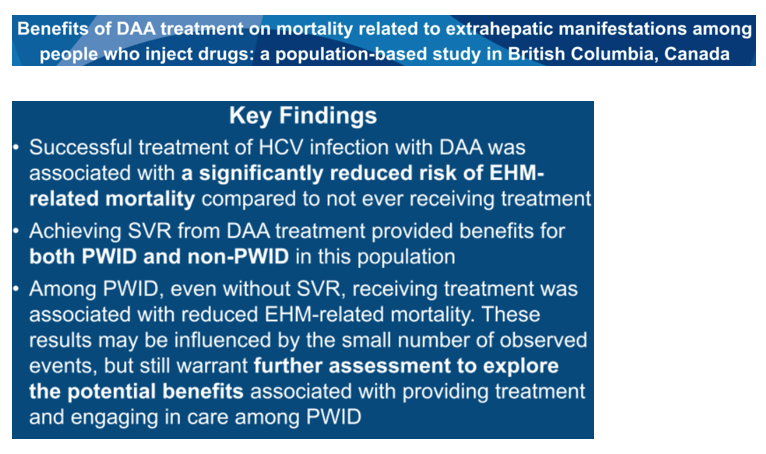
EHM-related mortality included deaths due to diabetes, rheumatoid arthritis, cardiovascular, cerebrovascular, renal, and neurocognitive diseases.

AASLD 2021 Nov 12-15
Dahn Jeong1,2, Sofia Bartlett1,3, Stanley Wong1, Mohammad Ehsanul Karim2,4, Jean Damascene Makuza1,2, Mawuena Binka1, Mohammad Karamouzian1,2, Prince Asumadu Adu1,2, Amanda Yu1, Maria Alvarez1, Héctor Alexander Velásquez García1, Hasina Samji1,5, Mel Krajden1,6 and Naveed Janjua1,2, (1)British Columbia Centre for Disease Control, (2)School of Population and Public Health, University of British Columbia,(3)Department of Pathology and Laboratory Medicine, University of British Columbia, (4)Centre for Health Evaluation and Outcome Sciences, St. Paul's Hospital, (5)Faculty of Health Sciences, Simon Fraser University, (6)Pathology and Laboratory Medicine, University of British Columbia
Background: Chronic infection with hepatitis C virus (HCV) increases the risk of extrahepatic manifestations (EHMs) and mortality related to EHMs. Direct-acting antivirals (DAA) result in high sustained virologic response (SVR) rates, even among populations with lower adherence such as people who inject drugs (PWID). PWID are at a higher risk for HCV infection and EHM-related mortality. We aimed at assessing the benefits of DAA treatment on EHM-related mortality among PWID in British Columbia (BC), Canada.
Methods: We used data from the BC Hepatitis Testers Cohort, which includes ~1.3 million people tested for or diagnosed with HCV since 1990, and is linked with administrative data including medical visits, hospitalizations, prescriptions and chronic disease registry. PWID were identified with previously validated algorithms. The study population included people identified with chronic HCV by December 31, 2018, and those who received at least one DAA treatment were matched to those who never received treatment by the year of their first HCV RNA positive date. We compared three groups: treated & SVR, treated & no-SVR, and untreated. EHM-related mortality included deaths due to diabetes, rheumatoid arthritis, cardiovascular, cerebrovascular, renal, and neurocognitive diseases. Follow-up ended with the earliest of 1) EHM-related death 2) other death or 3) end of study (2019-12-31). Inverse probability of treatment weights were estimated to adjust for differences in measured baseline characteristics and used to weight multivariable subdistribution hazards models.
Results: Among 21,388 eligible persons, 8,392 (39.2%) were PWID. Overall, 43.5% of PWID had been treated with DAA and 56.5% had never received treatment. EHM-related mortality rates among PWID and non-PWID were 18.9 (95% confidence interval[CI] 16.9-21.0) and 15.6 per 1,000 person-years (95% CI 14.3-17.0), respectively. In the multivariable models, the treated & SVR group had the greatest reduction in EHM-related mortality in both PWID (adjusted hazard ratio[aHR] 0.17, 95% CI 0.12-0.25) and non-PWID (aHR 0.16, 95% CI 0.12-0.20) compared to the untreated group. Among PWID, the treated & no-SVR group had a reduced risk of EHM-related mortality compared to the untreated group (aHR 0.20, 95% CI 0.07-0.57). Among non-PWID, the EHM-related mortality risk in the treated & no-SVR group did not differ significantly from the risk in the untreated group (aHR 0.95, 95% CI 0.35-2.56).
Conclusion: SVR from DAA provided benefits for both PWID and non-PWID. Among PWID, even without SVR, receiving treatment was associated with reduced EHM-related mortality. These results may be influenced by the small number of observed events, but still warrant further assessment to explore the potential benefits associated with providing treatment and engaging in care among PWID.
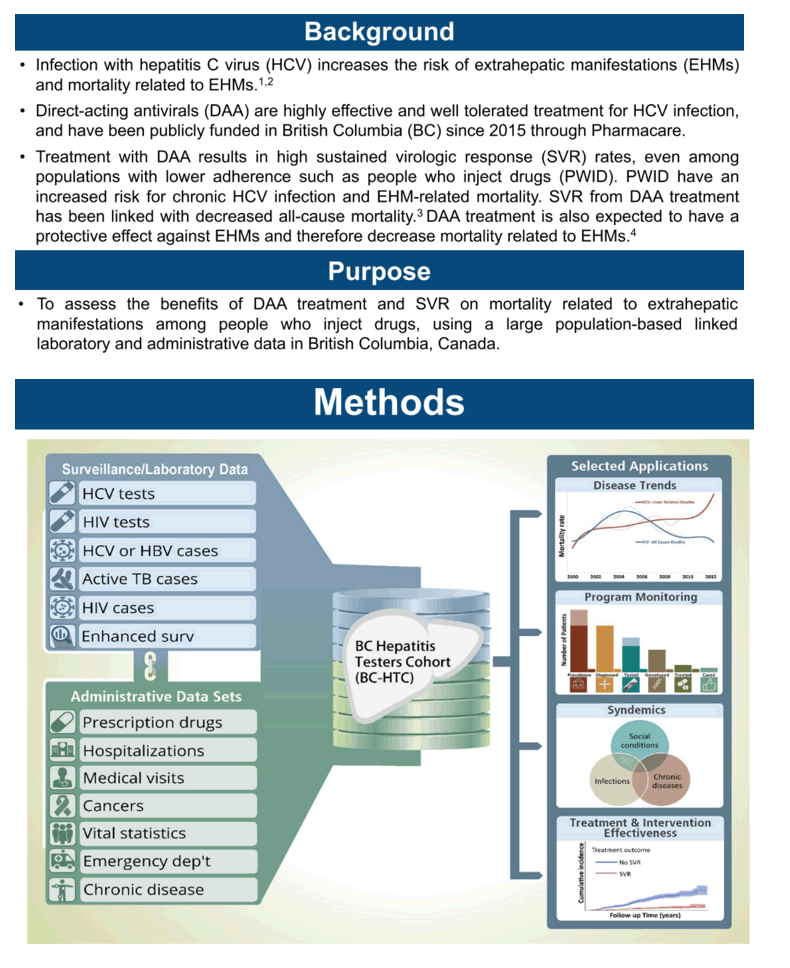
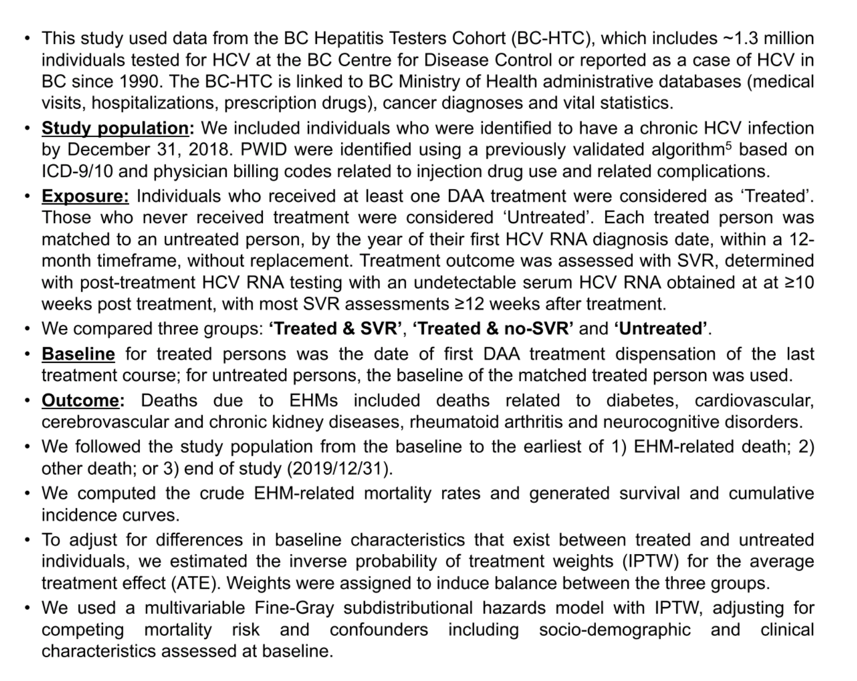
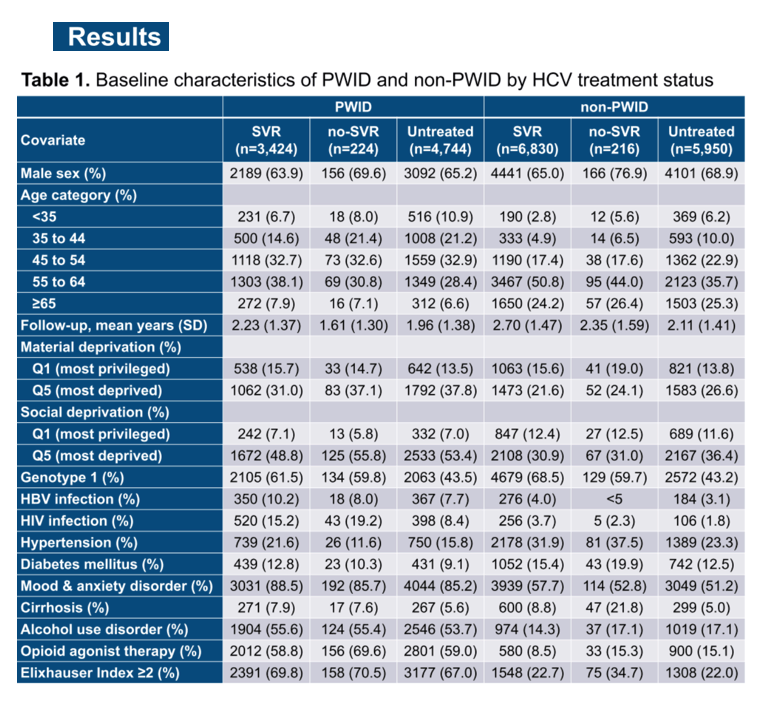
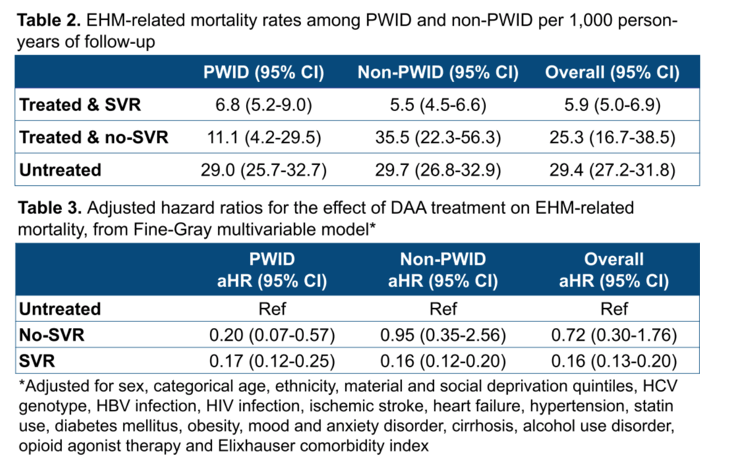
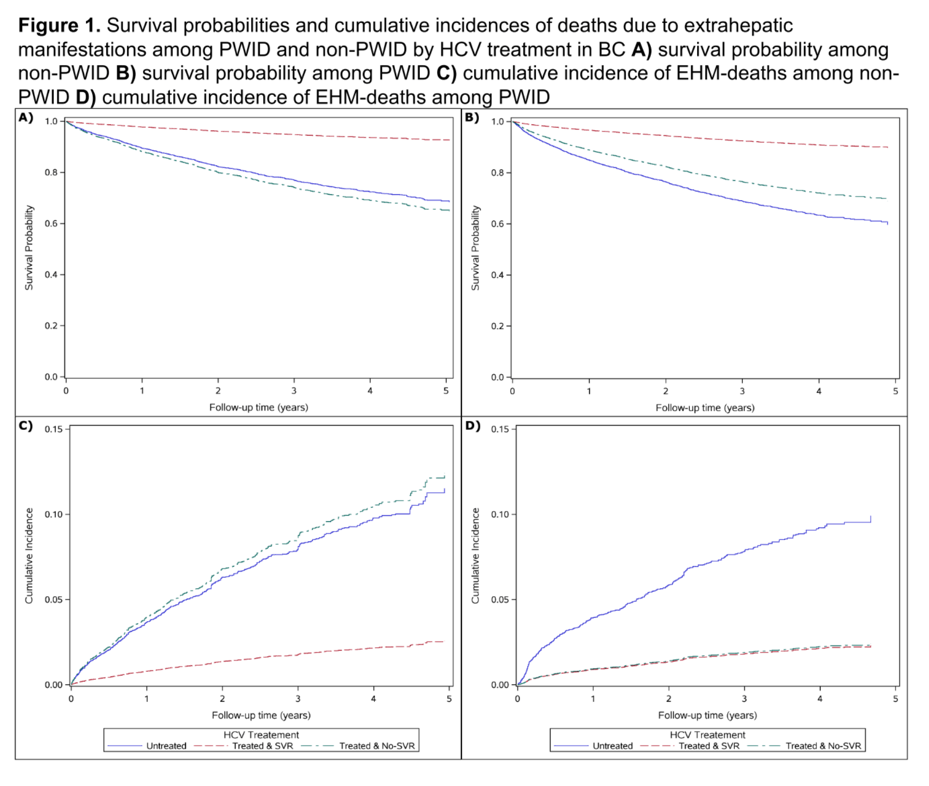
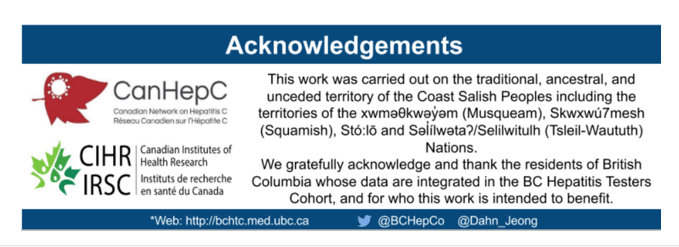
|
| |
|
 |
 |
|
|